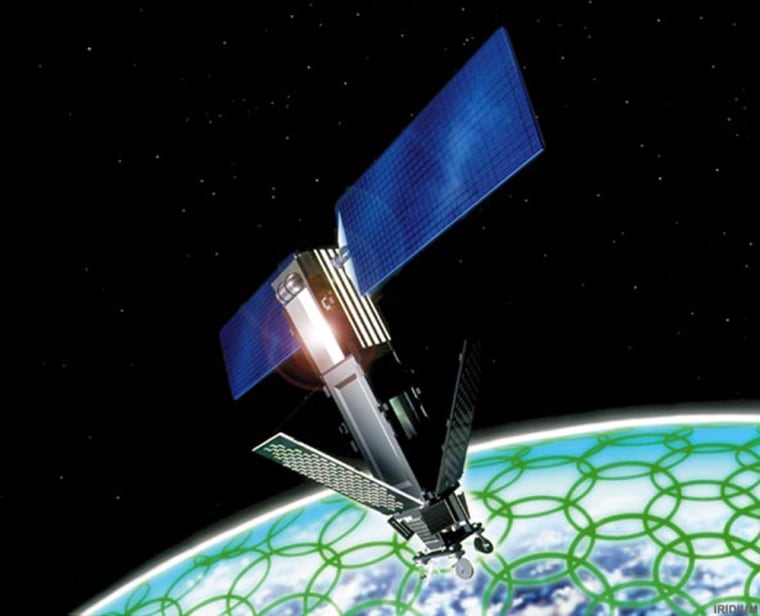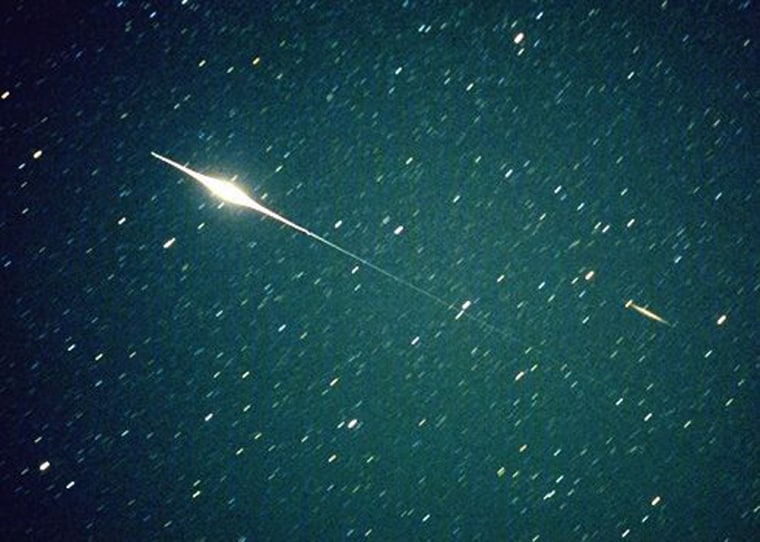A while back I received an inquiry from Craig Allen, a broadcast meteorologist in New York:
"I just thought you’d be interested in a rather unusual sky observation that I made recently from Nassau County (Long Island). I was walking my dog around 10 o’clock at night and was looking up, when I saw an ordinary-looking star that became incredibly bright.
"I do remember thinking I was witnessing the death of a star ... some kind of supernova so far away that it was only a small burst of light. In fact, for a few moments, I thought it might even have been brighter than Venus; the brightness went up, then ramped down ... eventually getting so dim that I couldn’t see it anymore.
"The whole thing from fade-up to fade-down probably lasted no more than 15 or 20 seconds. Any idea what I saw?"
What Allen fortuitously saw was an "Iridium flare," caused by one in a new fleet of satellites that have been put into Earth orbit over the past several years — satellites that can briefly appear to flare to incredible brilliance.
And you can spot them, too, especially if you take the time to find out when they're likely to occur.
Space mirrors
An Iridium communication satellite's Main Mission Antenna is a silver-coated Teflon antenna array that mimics near-perfect mirrors and are angled at 40 degrees away from the axis of the body of the satellites. This can provide a specular (direct) reflection of the sun’s disk, periodically causing a dazzling glint of reflected sunlight from their 492-mile-high (787-kilometer-high) orbits.

At Earth's surface, the specular reflection is probably less than 50 miles (80 kilometers) wide, so each flare can be viewed only from a fairly small area.
Iridium satellites normally traverse the sky on the edge of visibility, at +6 magnitude. On this astronomer's scale, smaller numbers represent brighter objects. Venus outshines all stars and planets at magnitude -4.
Iridium satellites can provide reflective flares of magnitude -9. That's up to 100 times brighter than Venus, based on how the brightness scale works. The flares can last anywhere from 5 to 20 seconds before the satellite once again becomes almost invisible to the naked eye.
In fact, it is even possible to see such flares during the daytime, if you know exactly where to look.
Where to look
If you wish to see such brief flares for yourself, you will first have to know your exact latitude, longitude and local time zone. Then, log on to a web page that will tell you when the next Iridium flares can be seen. One such site is Heavens Above, hosted by the German Aerospace Center (also known as DLR).
This site and others also provide viewing information for the international space station, the Hubble Space Telescope and other satellites.
A bit of caution: Not all Iridiums flare according to the predicted schedules. Some of the Iridium satellites are either tumbling or otherwise not operational so their future movements cannot be reliably predicted. A fully operational satellite should be orbiting Earth at 14.34 revolutions per day.
You may wonder why the satellites are called "Iridium." It has absolutely nothing to do with the metallic element that occurs in platinum ores. Originally, the satellite operators envisioned a network of 77 Iridium communication satellites that would be placed into Earth orbit. Since the atomic number for Iridium is 77, that served as the inspiriation for the satellite constellation's name.
In reality, a total of 88 satellites were launched between May 5, 1997 and June 11, 1999. Five more were launched on February 11, 2002. Typically, the expected lifetime of a satellite is five to eight years.
